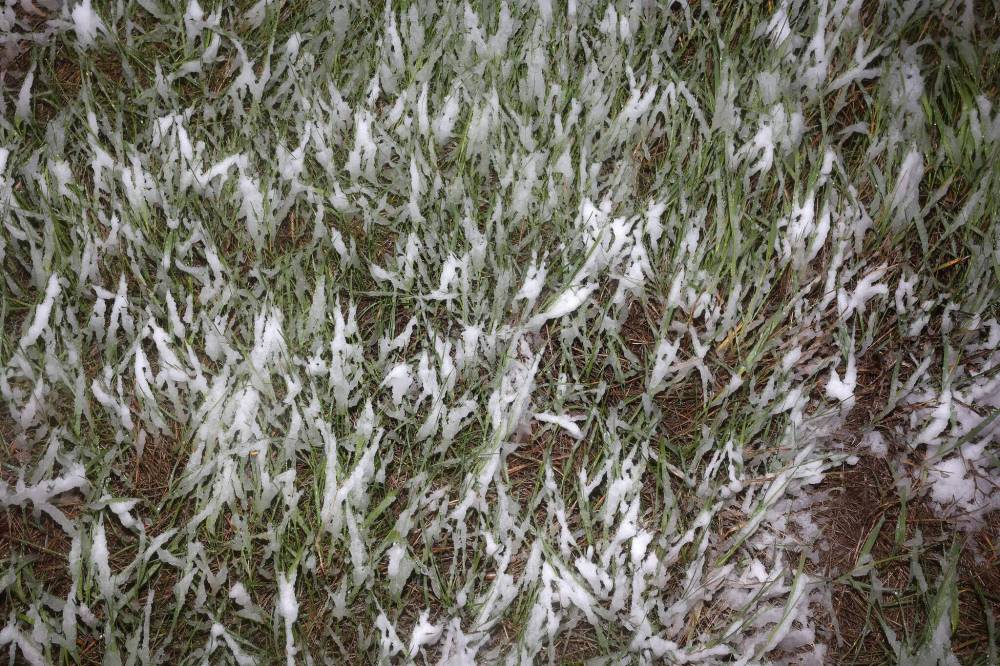Longer growing season, but weather more volatile
Advertisement
Read this article for free:
or
Already have an account? Log in here »
To continue reading, please subscribe:
Monthly Digital Subscription
$0 for the first 4 weeks*
- Enjoy unlimited reading on winnipegfreepress.com
- Read the E-Edition, our digital replica newspaper
- Access News Break, our award-winning app
- Play interactive puzzles
*No charge for 4 weeks then price increases to the regular rate of $19.00 plus GST every four weeks. Offer available to new and qualified returning subscribers only. Cancel any time.
Monthly Digital Subscription
$4.75/week*
- Enjoy unlimited reading on winnipegfreepress.com
- Read the E-Edition, our digital replica newspaper
- Access News Break, our award-winning app
- Play interactive puzzles
*Billed as $19 plus GST every four weeks. Cancel any time.
To continue reading, please subscribe:
Add Free Press access to your Brandon Sun subscription for only an additional
$1 for the first 4 weeks*
*Your next subscription payment will increase by $1.00 and you will be charged $16.99 plus GST for four weeks. After four weeks, your payment will increase to $23.99 plus GST every four weeks.
Read unlimited articles for free today:
or
Already have an account? Log in here »
Hey there, time traveller!
This article was published 24/05/2024 (533 days ago), so information in it may no longer be current.
The weather system that ushered in two days of heavy rains to southern Manitoba this week drowned any lingering worries that last year’s drought would spill over into another year.
Most of the province has received well above the 30-year norms for precipitation during May, which has been a godsend for getting newly planted crops off to a good start and reinvigorating pastures and forage lands.
With seeding only about halfway done across the province, there’s always a worry the remaining fields won’t dry quickly enough, but at this point, progress is only slightly behind the five-year average.

Snow accumulates in the grass along Hwy. 10 during flurries on a wet, snowy, and cool Friday. (Tim Smith / The Brandon Sun)
Farmers have first focused on planting crops such as wheat and peas, which germinate well in cooler soils. The most recent crop report issued by the province says seeding of those crops is about three-quarters of the way there. Attention has now shifted to getting canola and soybeans sown.
Farmers are highly conscious that the sooner they get them growing, the better their chances for yield. There is also an increasing sense of urgency, based on the heat waves of recent years, to get these crops past their critical flowering and seed set stage before the high heat of summer sets in.
If it seems as though summers have been getting hotter than we are accustomed to, it’s not your imagination.
While that’s hardly surprising given all the buzz about climate change and how that will affect our weather in the future, it was a little unsettling to read through some research that chronicles just how much our climate has already changed.
In an exhaustive review of studies tracking changes over the past century, a team of scientists led by Emmanuel Mapfumo of the University of Alberta highlighted some significant shifts in the growing conditions that modern Prairie farmers face relative to their ancestors.
Their review, published in the Canadian Journal of Plant Science, offers good news-bad news insights. However, it suggests some of the weather anomalies we’ve noticed in recent years are the new norm, which has implications for everything from research priorities to farming practices.
The daily maximum air temperature in Western Canada has increased between 1.2 and 3 C since 1950. The daily minimum temperature has risen 2.4 to 3.6 C.
Our winters are getting warmer and drier, which means less snow to melt in the spring. Crops need timely rains during the growing season, but they are equally reliant on moisture stored in the soil, which gets recharged by that snowmelt.
The growing seasons, measured by the number of days between the last and first frosts, are longer by as much as 20 days. That longer frost-free period increases yield potential but also the types of crops and where they can be grown.
However, the weather during the growing seasons is becoming more volatile. Yield-crippling heat events are becoming more common. Growing season precipitation is generally increasing but becoming more variable. As farmers well know, timing is everything.
For example, crop insurance data payouts over the past decade have soared, partly due to the increased value of insured crops but largely due to the number of claims. Between 2014 and 2018, payouts averaged just over $1 billion. Between 2019 and 2023, average payments more than tripled to $3.1 billion.
These climate trends are trackable, but the impact on yields is muddied by the steady improvement in seed genetics and changing farming practices, such as reduced tillage and an 89 per cent increase in fertilizer use.
Over the past couple of decades, the acreage of warm season crops such as corn and soybeans has expanded and that is expected to continue. The development of earlier-maturing varieties has been a big factor in that expansion, but research like this suggests changing climate has played a role as well.
“Overall, studies focusing on the Prairie Provinces in Canada have shown accelerated changes in several climate parameters over time, affecting cropping areas and crop yields,” the paper concludes.
As farmers’ dance with nature continues, they may be moving from a waltz to a two-step.
Laura Rance is executive editor, production content lead for Glacier FarmMedia. She can be reached at lrance@farmmedia

Laura Rance is editorial director at Farm Business Communications.
Our newsroom depends on a growing audience of readers to power our journalism. If you are not a paid reader, please consider becoming a subscriber.
Our newsroom depends on its audience of readers to power our journalism. Thank you for your support.



